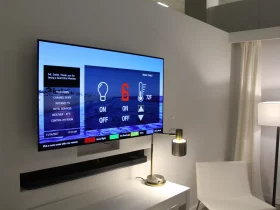The advent of the digital age has transformed the way we work, with many individuals spending a significant portion of their day in front of computer screens. While technology has undoubtedly enhanced productivity, prolonged exposure to screens can take a toll on both physical and mental health. This blog explores practical tips for maintaining well-being while navigating the demands of a computer-centric work environment.
Ergonomics and Workspace Setup
Ergonomics and workspace setup are fundamental elements for promoting health and comfort during prolonged computer use. Maintaining proper ergonomics involves configuring your work environment to reduce the risk of musculoskeletal issues and enhance overall well-being. Key considerations include the height of your chair and desk, which should be adjusted to ensure a neutral posture, minimizing strain on the spine and muscles. Additionally, positioning the computer monitor at eye level prevents excessive neck strain and supports a more comfortable viewing angle.
Investing in ergonomic accessories further refines the workspace setup. Adjustable chairs that support the natural curvature of the spine and ergonomic keyboards that promote a neutral wrist position contribute to a comfortable and productive workspace. Creating a well-organized and clutter-free desk environment fosters efficiency and reduces distractions, contributing to a more streamlined and enjoyable work experience. Prioritizing these ergonomic principles not only enhances physical health but also positively impacts productivity and focus, creating an environment conducive to optimal work performance.
Furthermore, understanding the importance of proper ergonomics underscores the need for individuals to take an active role in shaping their workspaces to suit their specific needs. Adhering to these principles not only mitigates the risk of discomfort and injury but also contributes to a more positive and conducive work atmosphere, promoting overall well-being in the digital workspace.
Proper Lighting and Eye Care
Proper lighting and eye care are paramount for maintaining optimal health and productivity in a computer-centric work environment. In today’s digital age, where screens emit blue light that can strain the eyes, adopting strategies for eye care becomes crucial. To mitigate the effects of prolonged screen exposure, individuals can learn more about blue light-blocking glasses. These specialized glasses are designed to filter out the harmful blue light emitted by screens, reducing eye strain and fatigue. Incorporating them into the daily routine can contribute to enhanced eye comfort, especially for those spending extended hours in front of computers.
In addition to using blue light-blocking glasses, adjusting the lighting in your workspace plays a significant role in eye care. Well-lit environments with natural or appropriately placed artificial light can reduce eye strain. Positioning the computer monitor to avoid glare and adjusting screen brightness settings are practical measures. By combining these insights with proactive adjustments to lighting and screen settings, individuals can take proactive steps toward preserving their vision and minimizing the impact of prolonged screen exposure on eye health.
Regular Breaks and Stretching Exercises
Regular breaks and stretching exercises play a pivotal role in counteracting the sedentary nature of prolonged computer use and contribute to maintaining overall physical well-being. The 20-20-20 rule is a simple yet effective strategy to combat eye strain and stiffness. Every 20 minutes, take a 20-second break and focus on something 20 feet away. This practice not only refreshes your eyes but also helps prevent long-term strain associated with continuous screen exposure.
Incorporating stretching exercises into your routine provides multiple benefits, including improving flexibility, reducing muscle tension, and enhancing circulation. Simple stretches like neck rotations, shoulder rolls, and wrist exercises can be seamlessly integrated into short breaks. These exercises help alleviate muscle stiffness, prevent discomfort, and promote better blood flow, contributing to enhanced overall comfort and productivity. Encouraging a workplace culture that recognizes the importance of regular breaks and stretching exercises not only fosters physical health but also contributes to a more vibrant and energized work environment.
Healthy Snacking and Hydration
Maintaining a healthy diet, including mindful snacking, and staying adequately hydrated are vital components of sustaining energy and well-being during extended computer use. Opting for nutritious snacks can help regulate blood sugar levels, preventing energy crashes and promoting sustained focus. Incorporating snacks rich in protein, fiber, and healthy fats, such as nuts, fruits, and yogurt, provides a balanced nutritional boost, supporting overall health and cognitive function throughout the workday.
Hydration is equally essential for sustained well-being and optimal performance. Keeping a water bottle at your desk and staying mindful of regular water intake helps prevent dehydration, which can lead to fatigue and diminished concentration. Proper hydration also supports overall bodily functions, from digestion to temperature regulation. By making conscious choices about snacking and staying hydrated, individuals can positively impact their physical and mental health, fostering an environment conducive to productivity and overall well-being in the workplace.
Mental Health Strategies
Working in front of a computer can take a toll on mental health, leading to stress and burnout. Implementing mindfulness and relaxation techniques can significantly mitigate these challenges. Consider short meditation or deep-breathing sessions during breaks to center your mind. Setting clear boundaries between work and personal life is essential for maintaining mental well-being and preventing burnout.
Exercise Integration
Regular exercise is a key component of a healthy lifestyle, and finding ways to incorporate physical activity into your daily routine is crucial. Desk exercises and stretches can be seamlessly integrated into your workday to enhance mobility and counteract the effects of prolonged sitting. Beyond desk exercises, consider incorporating regular cardiovascular exercise into your routine to boost overall health.
Sleep Hygiene
The importance of quality sleep cannot be overstated when it comes to maintaining health and productivity. Establish a consistent sleep schedule, aiming for 7-9 hours of sleep per night. Create a sleep-conducive environment by minimizing screen time before bedtime and ensuring your bedroom is dark and quiet. Quality sleep is foundational for cognitive function, emotional well-being, and overall vitality.
Building a Supportive Work Environment
Effective communication with employers about ergonomic needs is vital for creating a supportive work environment. Encouraging a workplace culture that prioritizes employee health and well-being fosters a positive atmosphere. Open communication about challenges and potential solutions ensures that both employers and employees actively contribute to creating a workspace that promotes health and productivity.

In conclusion, prioritizing health while working in front of a computer is essential for long-term well-being. By implementing these tips – optimizing ergonomics, taking regular breaks, focusing on nutrition and hydration, addressing mental health, ensuring proper lighting and eye care, incorporating exercise, prioritizing sleep, and building a supportive work environment – individuals can navigate the demands of a digital work landscape while maintaining their health and vitality. Empower yourself with these practical strategies to thrive in the digital age.













